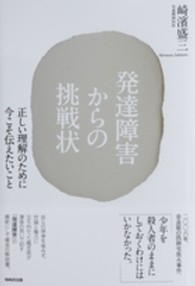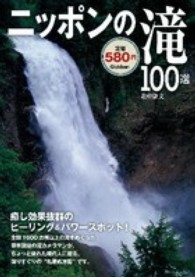- ホーム
- > 洋書
- > ドイツ書
- > Humanities, Arts & Music
- > Arts
- > graphic arts
Full Description
The work of Japanese-Swiss painter Teruko Yokoi (1924-2020) is characterised by unflagging creative energy and constant evolution. This book takes an in-depth look at her painting methods and her own vocabulary of abstraction, which was formulated over the course of a long artistic career. Art historian Kuniko Satonobu Spirig, who is also of Japanese origin, analyses and explains cultural and biographical relations in Yokoi's art, as well as the influences of abstract expressionism on her painting technique.
Raised in the city of Tsushima on the Japanese island of that name, Yokoi moved to Tokyo in 1949, where she attended the private Joshibi University of Art and Design (Joshibijutsu Daigaku). In 1954, she went to the United States, where she completed her education at the San Francisco Art Institute and with painters Hans Hofmann and Julian E. Levi in New York. There she met artists such as Sam Francis—whom she married in 1959— Mark Rothko, and Kenzo Okada. In this environment, she drew new energy and began to develop her own style of abstraction and to invent her own idiom. In 1962, she moved to Switzerland, where she lived and worked tirelessly in the city of Bern until her death.
Text in English and Japanese.
Contents
6 Prolog
18 Towards Abstraction
and Diamonds
30 Abstract Expressionism
in the Diamond
36 Spots
44 Ryokan's Points:
Expanding Yokoi's
Vocabulary of Abstraction
56 Empty Space
62 Image
68 Autumn Poem:
Painting with Calligraphy
74 Poppies
80 Epilog:
Yokoi as a Woman Artist
86 Afterword
94 List of Works








